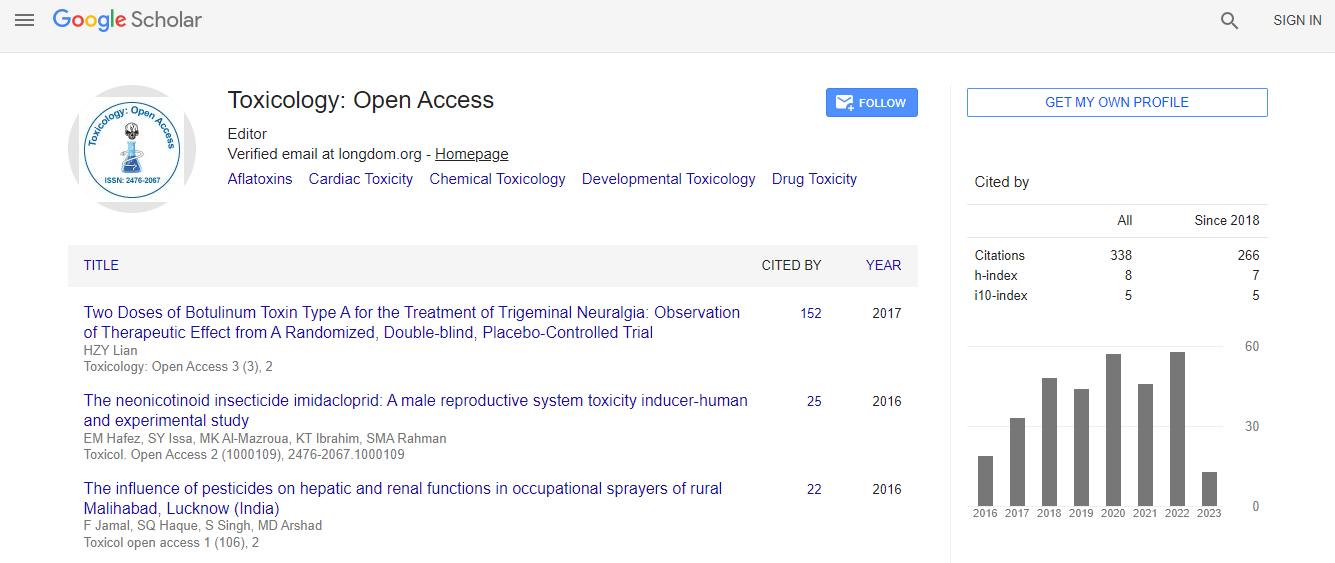Our Group organises 3000+ Global Conferenceseries Events every year across USA, Europe & Asia with support from 1000 more scientific Societies and Publishes 700+ Open Access Journals which contains over 50000 eminent personalities, reputed scientists as editorial board members.
Open Access Journals gaining more Readers and Citations
700 Journals and 15,000,000 Readers Each Journal is getting 25,000+ Readers
Google Scholar citation report
Citations : 336
Toxicology: Open Access received 336 citations as per Google Scholar report
Indexed In
- Google Scholar
- RefSeek
- Hamdard University
- EBSCO A-Z
- Geneva Foundation for Medical Education and Research
- Euro Pub
- ICMJE
Useful Links
Related Subjects
Share This Page
Brain free hemoglobin increase is different among anticoagulant classes
14th World Congress on Toxicology and Pharmacology
Sergey V Brodsky
The Ohio State University, USA
ScientificTracks Abstracts: Toxicol Open Access
Abstract
Background & Aim: Anticoagulant therapy is broadly used to prevent thromboembolic events. Intracranial hemorrhages are serious complications of anticoagulation, especially with vitamin K inhibitors, including warfarin. Novel direct oral anticoagulants (DOAC) reduce, but not completely eliminate the risk of intracranial hemorrhages. The aim of this study was to investigate the severity of brain hemorrhages as measured by free hemoglobin in the brain parenchyma, among different anticoagulant classes in rats. Methods: Rats were treated with excessive doses (LD50) of different anticoagulant classes (vitamin K antagonists, including brodifacoum and warfarin, heparin, direct thrombin inhibitor and factor Xa inhibitor). Free hemoglobin concentration was measured in the brain. Results: Vitamin K antagonists resulted in significant increase in free hemoglobin in the brain. Among DOAC, direct thrombin inhibitor dabigatran also increased free hemoglobin in the brain, whereas treatment with factor Xa inhibitor rivaroxaban did not have effect on free hemoglobin concentration. Conclusion: Our data indicate that different anticoagulant class result in different accumulation of free hemoglobin in the brain and it is more pronounced with vitamin K inhibitors.Biography
Sergey V Brodsky is an Associate Professor of Department of Pathology, The Ohio State University Wexner Medical Center (OSUWMC), Columbus, OH. He has published more than 25 papers in reputed journals and has been serving as an Editorial Board Member of American Journal of Physiology, American Journal of Transplantation, ISRN Transplantation and Pharmacological Research.
Email:sergey.brodsky@osumc.edu

 Spanish
Spanish  Chinese
Chinese  Russian
Russian  German
German  French
French  Japanese
Japanese  Portuguese
Portuguese  Hindi
Hindi 